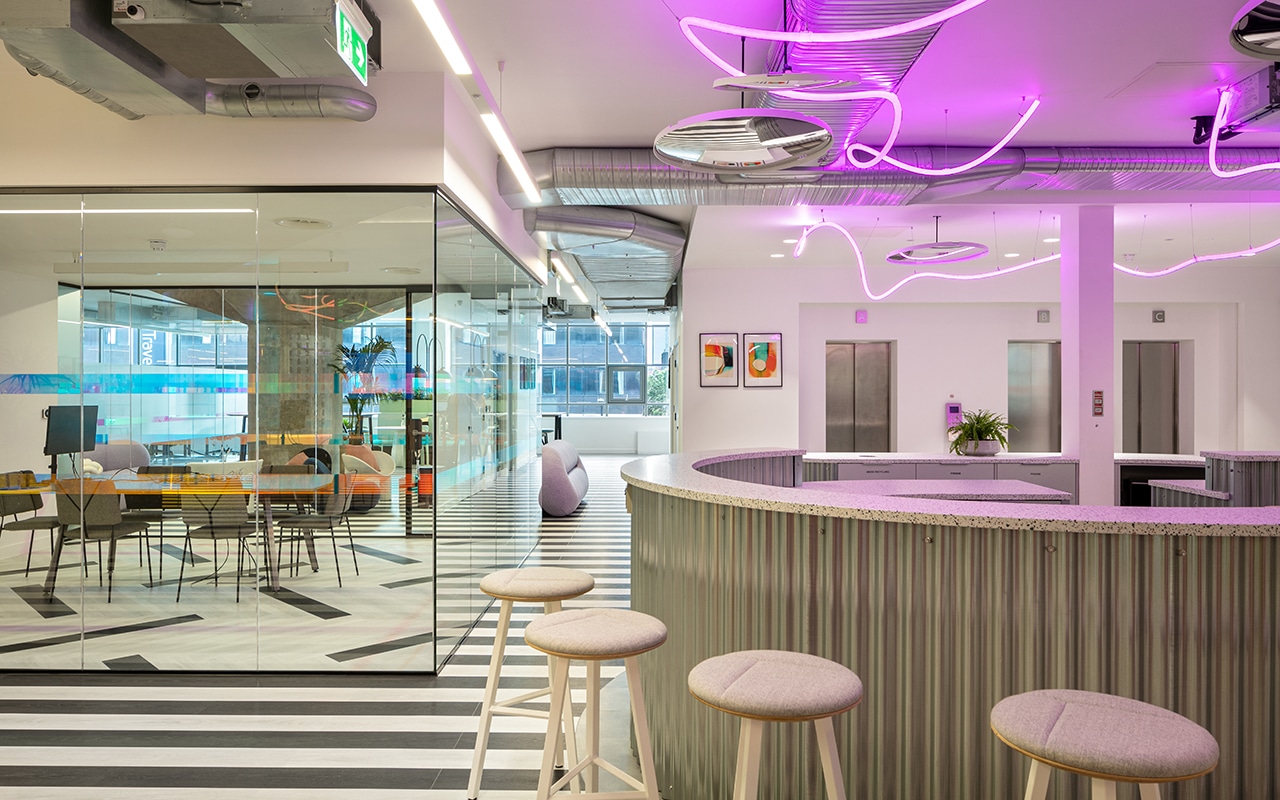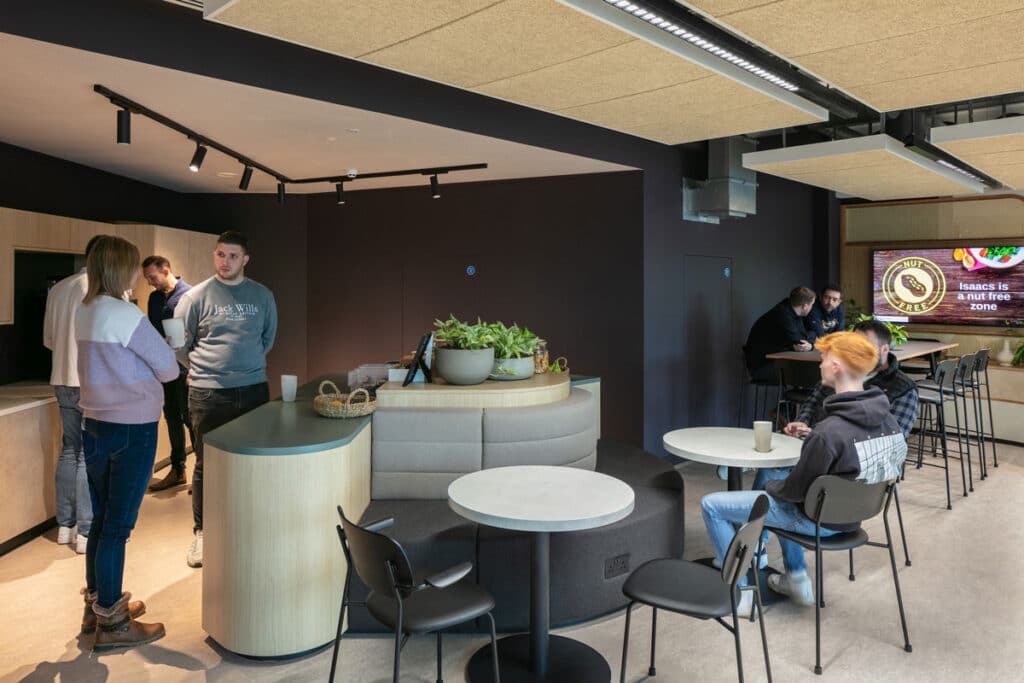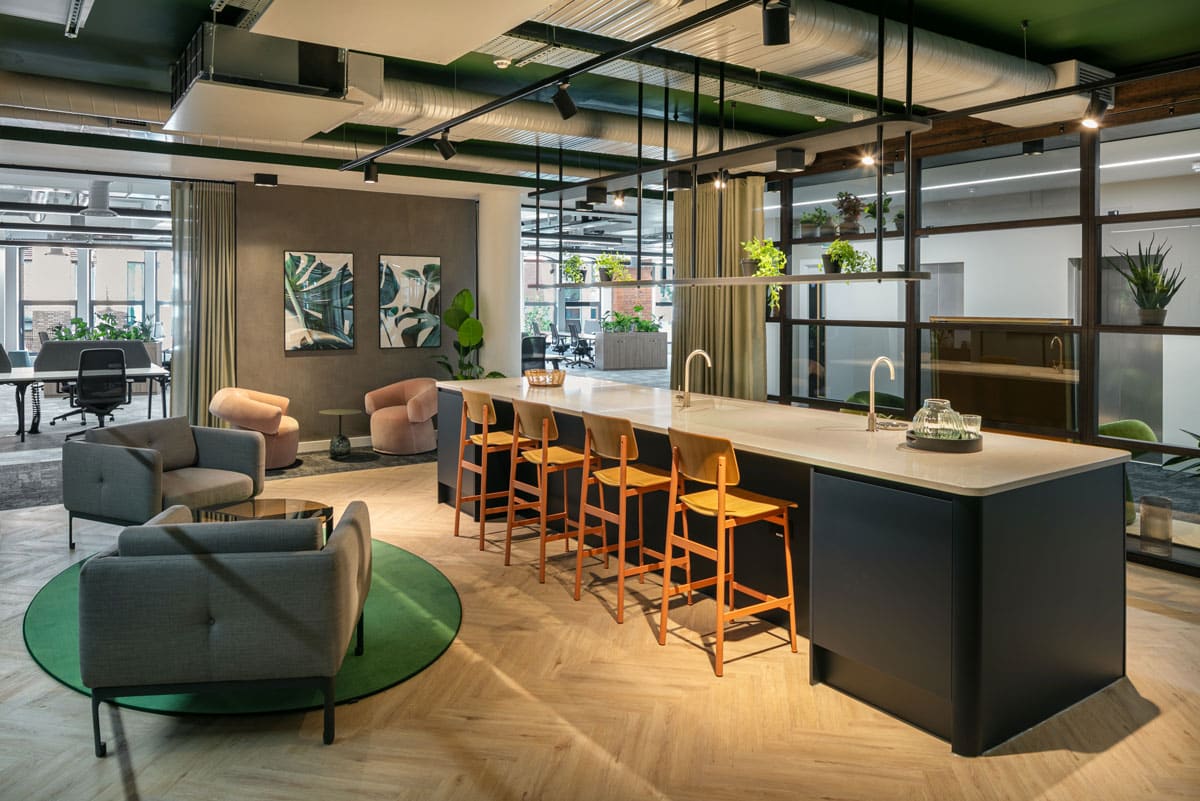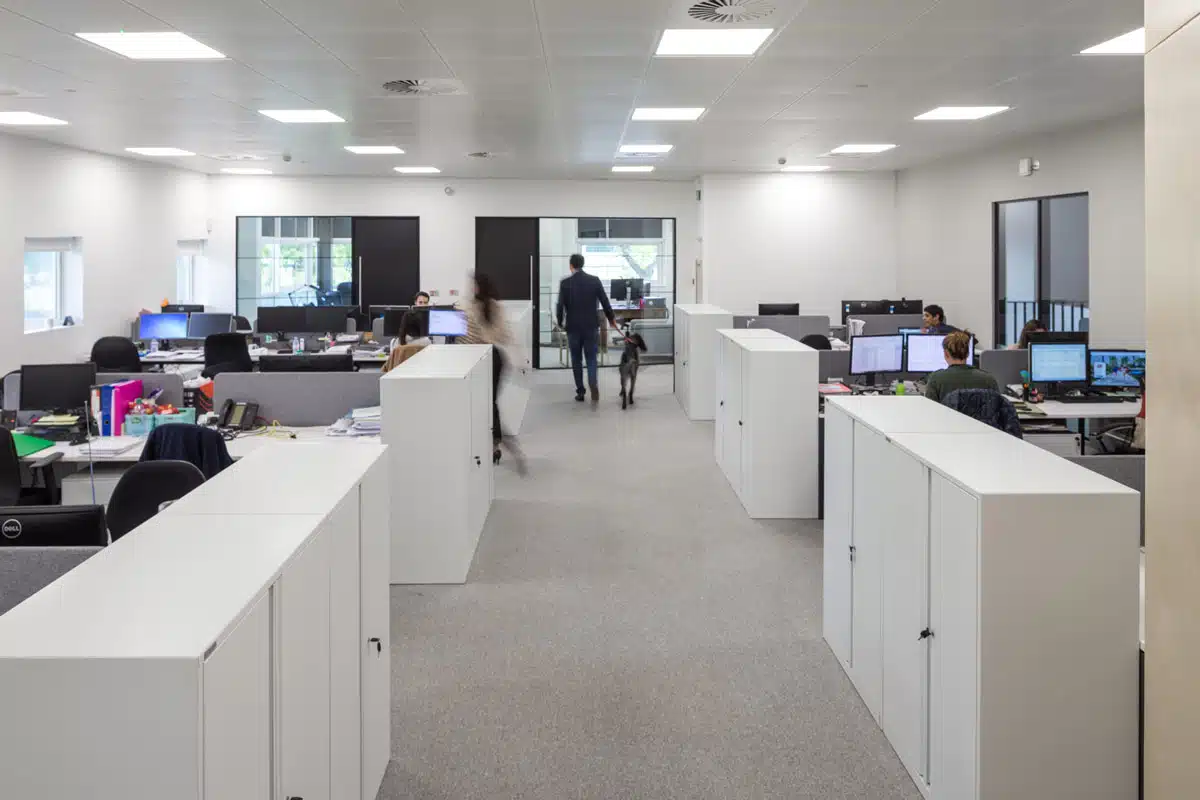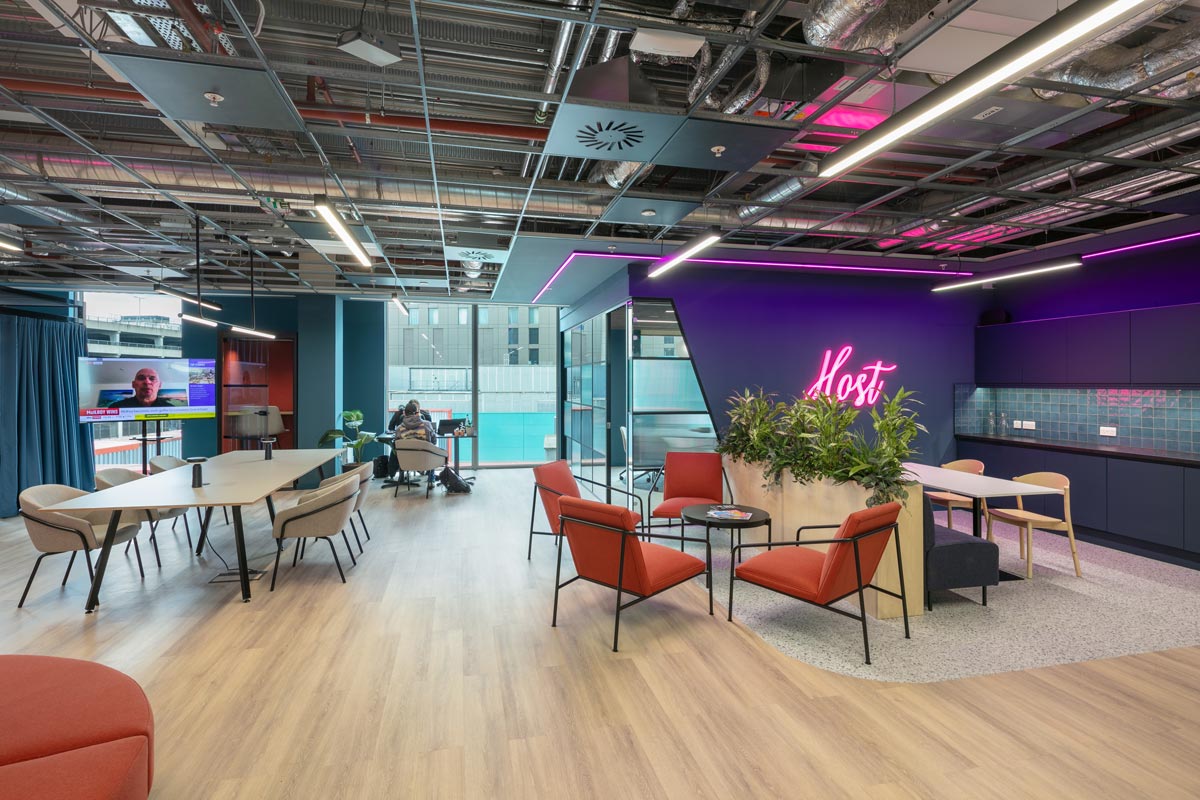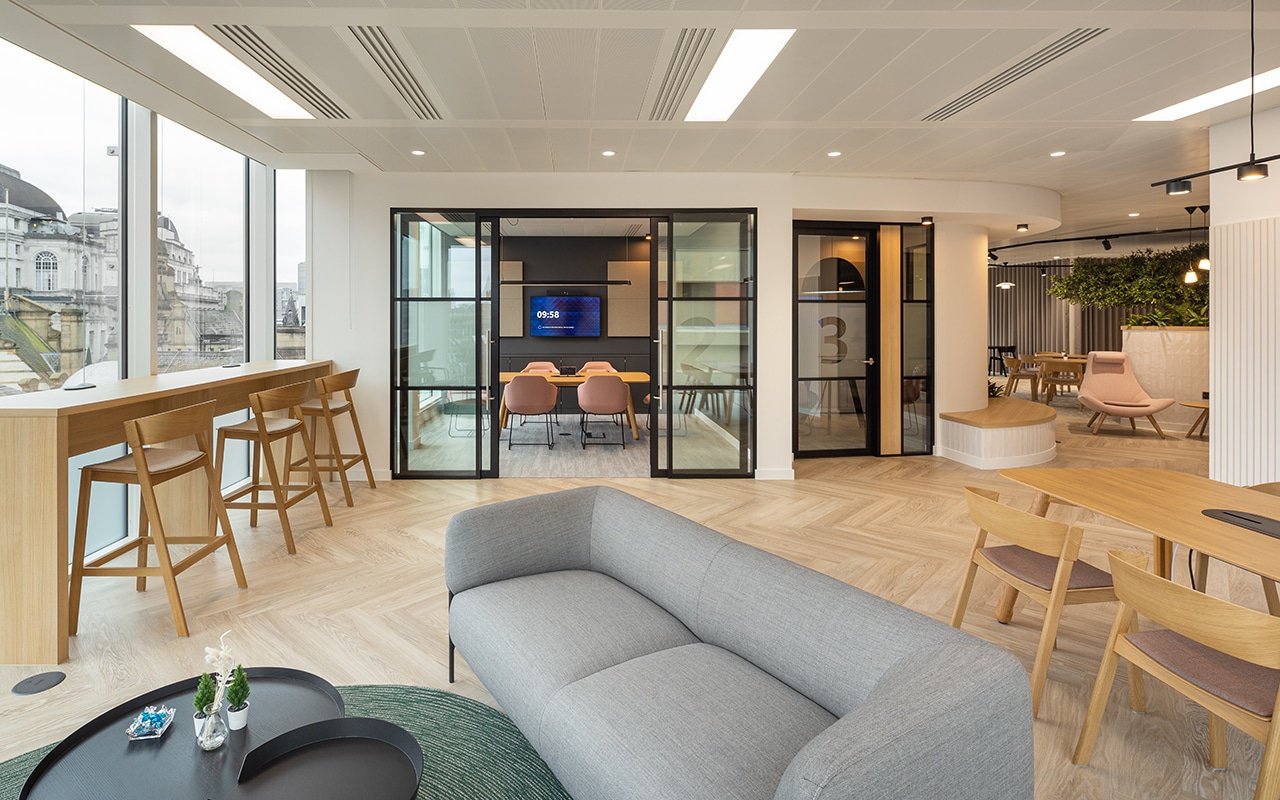Beyond the Brew: The Office Kitchen’s New Role
Traditionally, the office kitchen was a simple tea point or kitchenette — a purely functional space for making drinks or heating up lunch. But modern office design now treats the kitchen as a strategic zone. It’s where spontaneous conversations happen, cross-team relationships develop, and company culture is visibly reinforced.
By investing in a well-designed kitchen, employers send a clear message: staff wellbeing matters, and every part of the workspace is designed to support them.
Designing for Connection and Comfort
A successful office kitchen should encourage people to stay, chat, and interact — not just grab a drink and leave. Open-plan layouts are key to this. Removing physical barriers and offering easy flow between kitchen areas, breakout spaces and seating zones helps create an inviting, inclusive atmosphere.
Consider incorporating high tables for standing chats, bench seating for relaxed lunches, and soft furnishings for informal meetings. These zones should be flexible and accessible to all, with clear sightlines that maintain the openness of the workplace.
Natural materials such as timber, stone, and plants can enhance the overall atmosphere, while also supporting biophilic design principles that improve wellbeing.
Multi-functionality: More Than a Place to Eat
Office kitchens are no longer just about food. They now double as spaces for socialising, team check-ins, and even solo working when quieter zones are needed. To support this, zoning is vital.
Clearly defined areas for preparation, eating, working, and relaxing reduce clutter and make the space more usable. For example:
- Preparation zone: Equipped with modern appliances, hot taps, fridges and dishwashers for day-to-day convenience.
- Dining zone: Large communal tables that accommodate shared lunches or casual chats.
- Breakout zone: Softer seating for downtime, reading, or private calls.
- Work-friendly zone: Small bar-style counters or quiet corners with power access for laptop use.
This kind of multi-functionality also improves the value of the space, making it work harder for both staff and the business.
Sustainability in Kitchen Fit-Outs
Sustainability is an increasingly important element in office design, and the kitchen is no exception. From energy-efficient appliances and low-flow taps to recycling systems and sustainably sourced materials, every detail counts.
Choosing durable finishes that will stand the test of time also supports long-term value. Recycled worktops, FSC-certified cabinetry, and motion-sensor lighting are simple upgrades that contribute to a lower environmental footprint — without compromising on aesthetics or performance.
Employers can also encourage eco-friendly behaviours through signage and storage solutions that support waste separation and reduced food waste.
Reflecting Brand and Culture
The design of your office kitchen should reflect your brand personality just as much as your reception area or boardroom does. Whether you’re a creative agency, a professional services firm, or a tech startup, the look and feel of your kitchen should align with your company values.
A vibrant colour palette and playful finishes may suit a youthful, innovative team, while minimalist tones and high-spec appliances might better match a more corporate aesthetic. Branded coffee machines, staff artwork, or curated pinboards can add a personal touch that fosters belonging and pride.
Ultimately, the kitchen is a space where your people should feel comfortable, appreciated, and encouraged to connect. It’s a space that tells your team – and your visitors – who you are.
Supporting Staff Wellbeing
A well-planned kitchen space can play a key role in supporting mental and physical wellbeing. Natural light, good ventilation, and thoughtful seating options all contribute to a more pleasant environment. Adding biophilic features, such as plants or green walls, can further improve the space and create a calming atmosphere.
Offering healthy food options, filtered water, or even fruit baskets can encourage positive habits. And don’t underestimate the wellbeing boost of simply having a clean, spacious, and welcoming environment to step away from the desk.
Conclusion
The modern office kitchen is more than a place to make tea. It’s a dynamic space that supports connection, collaboration, and wellbeing. When thoughtfully designed, it becomes a true social hub — one that reflects your culture, strengthens your brand, and makes day-to-day life in the office more enjoyable.
At ADT Workplace, we understand how important it is to create spaces that serve both function and culture. Whether you’re planning a full fit-out or enhancing an existing space, our team can help you design an office kitchen that’s perfectly suited to your people and your business.

